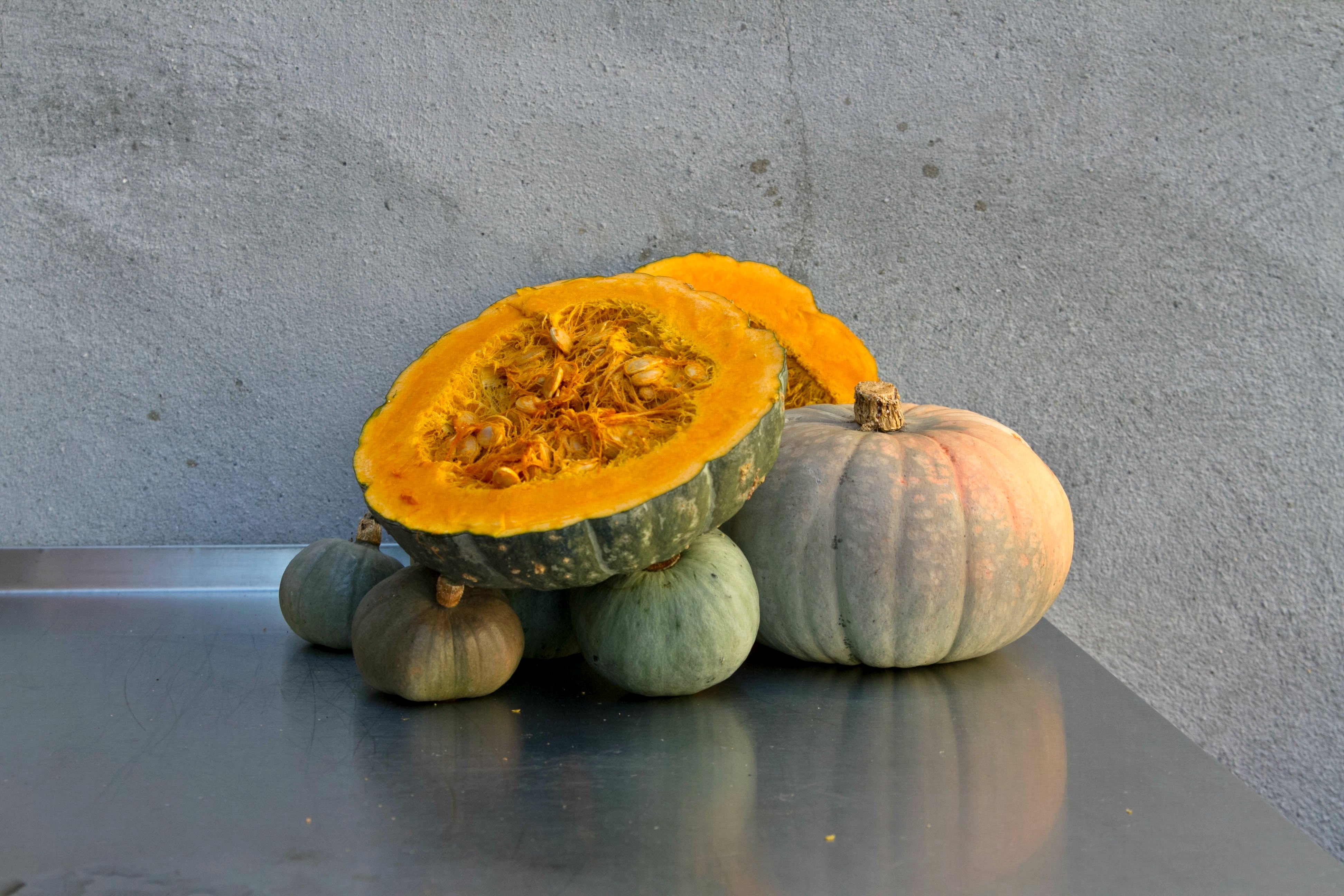
Why do we always lean on butternut squash and pumpkin when kabocha has a unique flavor and can hold up nicely when fried, roasted, or made into a pie?
Kabocha squash is rather plain in the looks department. No dazzling colors, no sensuous curves. No one would look twice if they passed it by in the produce department. But with deft preparation, kabocha is a character whose every presentation dazzles. A vegetable with both breadth and depth. It’s the Gary Oldman of winter squash.
Pumpkin is fairly bland, needing the boost of a grand supporting cast to shine. Butternut, though sweet, has a high water content. And the best that can be said for hubbard is that it doesn’t spoil in a hurry. But kabocha is much more complex. The flesh is both sweet and earthy. The texture is flour-y. If you didn’t know what you were eating, you’d be forgiven for thinking a sweet potato had carried out a romance with a chestnut.

Some home cooks avoid squash, intimidated by all the knifework involved in peeling and cubing. But despite the stalwart rind, there is an easy way to prepare kabocha, with limited slicing involved. Literally just a single cut. Because it contains less water than many squash, kabocha responds better to oil, especially when roasted with butter or fried as tempura. The flesh absorbs fat in a way that enriches flavors without turning greasy. So it holds up well on the grill or in the wok, in sweet baked dishes, savory curries, or even when served raw and thinly sliced, then dropped at the last possible moment into a bowl of piping-hot udon.
All squash has meso-American origins, yet most varieties grown in the U.S. have some New England pedigree.
Compared to such earnest upbringing, kabocha is a cosmopolite, having taken the long way round from South America to the grocery store. In the 16th century, Portuguese sailors brought the squash from Brazil to Nagasaki at about the same time missionaries were dazzling the locals with tempura. Because Portugal also had trading posts in Southeast Asia, the squash was introduced as Cambodia abóbora, or Cambodia pumpkin, a name that became localized and shortened in Japanese to kabocha.
In my kitchen, kabocha is a squash that gives twice. Three times if I decide to roast the seeds. The first night I split a medium squash in half laterally, roast it with butter, ginger, and honey, then serve one half as part of the meal or as a dish in itself. The next night, I peel the shell off the remaining half and puree the flesh for pumpkin pie (but you could also use it for soup or in a puree). Kabocha’s chestnut flavor really comes to the fore in this dessert, and owing to the vegetable’s natural sweetness, it requires much less help from sugar and spice as pie. Not to mention the lower water content makes for a much firmer though still flour-y filling.

In much of the English-speaking world, choosing kabocha over pumpkin would not be problematic. In Australia and New Zealand, all winter squash are called pumpkins, regardless of how orange the rind. In those places, my move to make pumpkin pie out of kabocha would get a pass. But I live in the United States, where only one squash gets to be pumpkin. Which means if I’m not about to mash up a jack-o-lantern, then it’s just not pumpkin pie.
To which I say, phooey. Because if you set aside spice, crust, whipped cream, and tradition, pumpkin pie has an awful existential problem. And the problem with pumpkin pie is pumpkin—a condition easily remedied by substituting a more flavorful squash.